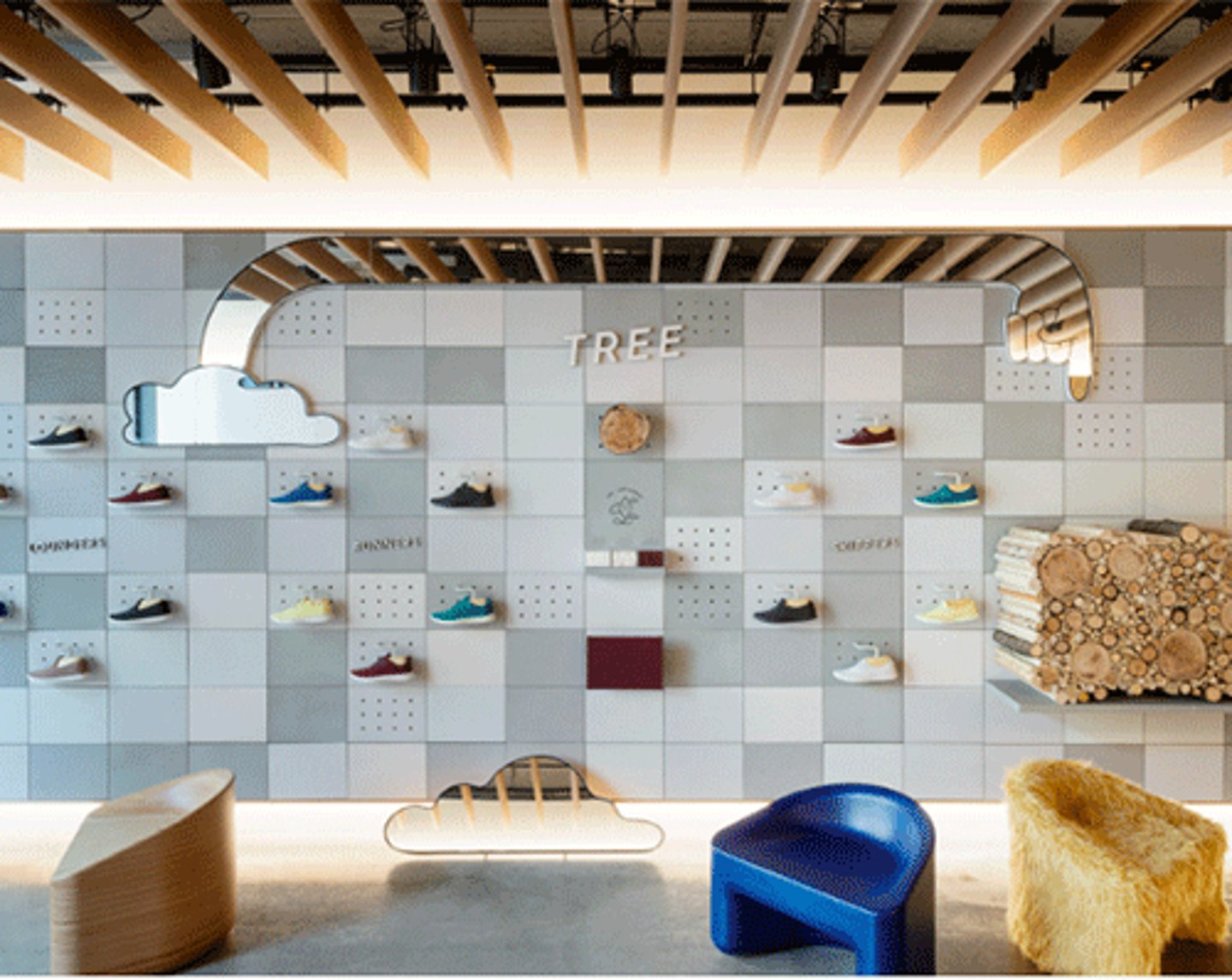Designing Brick and Mortar for the Digital Age
The digital age and all of today’s advancements in e-commerce have prompted us to adapt quickly — especially when it comes to the shopping experience. Now with two-day shipping, one-click checkout, and other ways e-commerce is modernizing how we make purchases, brick-and-mortar stores must pivot due to the rising influence of online shopping.
The pandemic only heightened the need for stores to shift priorities as customers are looking for more than just the goods – they are seeking meaningful and tailored shopping experiences. Architects and designers have the responsibility of maximizing the potential of a brick-and-mortar location through touch points that keep consumers’ preferences top of mind. Customers are better engaged in environments where they are greeted with lounge spaces, in-store cafes, and self-checkouts. Brands must transition from solely selling merchandise to creating a personal journey for their customers – especially adapting to younger shoppers and their expectations of what today’s physical in-store experience should look like through a digital lens.
Physical Stores Shifting From Online to In-Store
Before the days of digital consumerism, brands placed most of their efforts on selling their goods in stores. As the popularity of online shopping has grown, physical stores and online retailers are learning to co-exist. It is now up to retailers to immerse customers in the brand from the moment they walk through the door to make a connection.
The convergence of online and in-person shopping is an important factor that designers must consider when conceptualizing how the customer will interact with the physical space. For their first brick-and-mortar location, Allbirds translated their digital presence into the physical space by infusing the space with their brand identity through natural finishes, playful fixtures, and interactive educational touchpoints.
For digital-to-consumer (D2C) brands looking to open a brick and mortar, owners can leverage existing consumer data to strategize future store locations based on where they ship products directly to target markets. The built environment needs to dovetail with the online one in order to create a holistic brand experience where the virtual speaks to the physical and vice versa.
Wayfinding
Another major consideration when designing physical retail locations is store navigation and showcases. Wayfinding signage and environmental identity play a huge role in the customer’s in-store experience. Legible, thoughtful and creative signage and graphics that guide shoppers through the store in an interactive and engaging journey contribute to the immersive experience by empowering shoppers to explore on their own.
This is also a great opportunity for the brand to incorporate educational touchpoints and values into the environment to enhance the company’s image, making a lasting impression on shoppers.
Digital
Digital integrations further connect the online and in-person experience, with dynamic promotions, searchable product information, and mobile-friendly integrations. Stations for customers to scan QR codes for pricing – or smart shelf tags to join loyalty rewards programs encourage customer engagement while bringing information directly to their personal devices.
Store design, previously dictated by inventory space balanced with showcasing new releases and mainstay best-sellers, is less restricted with the expansion of digital shops that give customers a new avenue to search the offerings. With more flexibility of the merchandise that needs to be carried and featured in store, local edits can be prioritized with additional options available online to purchase and ship directly home.
Digital integrations in-store allow customers to explore the full selection of the store’s products available online, saving inventory space and allowing added space for the merchandisers to get creative when showcasing their in-store edit.
Customer Journey
Customer journey also impacts the store design. While some come to peruse and take their time exploring the store’s offerings, other customers visit the store with a goal in mind to pick up their new purchase efficiently. With in-store pickup on the rise, implementing a designated BOPIS (Buy Online, Pickup in Store) at the front of the store also allows for a speedy and hassle-free transaction.
When designing VinFast’s US showrooms, we considered how to attract, engage, and intrigue audiences as they navigated through the space. While some may be learning of VinFast for the first time and meander through the store to learn more, other shoppers may arrive with the goal of experiencing the vehicle first-hand and making their purchase.
Designing For Digitally Savvy Audiences
The shopping experience rapidly adapts to the next generation’s needs, and millennials and Gen Z are pivotal in reshaping how consumers interact with retail spaces. Retailers have already changed how they sell and communicate in physical retail environments to accommodate the online experiences and apps that today’s shoppers prefer.
Mobile apps bring the retail experience to consumers’ pockets, allowing them to browse, shop, and explore the latest trends from anywhere and anytime. Apps give easy access to the brand’s products, reviews, and where to buy from the comfort of the phone, and social media marketing brings new audiences by showcasing trending items to target markets. By connecting the mobile experience into physical stores, shoppers recognize the brand through visual cohesion and the store becomes an enticing destination. Digital integrations of social media, online stores, and influencer promotions further engage their customers by bringing what was seen in the digital into the physical.
Elevating the Shopping Experience
With customer convenience and personalization, a priority, it’s crucial that brands communicate with designers about how to best design for their specific customer. Customers want to enjoy their time going into the store, perusing and shopping, and they will plan to return when the experience is memorable and unique.
Together, designers and brands must collaborate on the store design to cater to their customers’ preferences, considering what is the most efficient and enjoyable way for customers to shop. By customizing the experience to the target audience, brands entice visitors to return again and again for new and thrilling product and experiences.
Designers can elevate their spaces by infusing a hospitality-like atmosphere into the physical store. Whether it’s leveraging comfortable sofas, coffee tables, or even an in-store coffee shop or bar, the luxurious offerings invite customers into the space and entice them to stick around and be well-taken care of. With these added touches, shopping becomes less mundane and more exciting, especially when the environment is reminiscent of a home, hotel, restaurant, or bar.
Customers engage better in familiar and enjoyable environments, and the more comfortable a shopper is, the more likely they are to stay longer, tell others about their experience, and return. At the Bucherer flagship in New York City, bars on each of the three levels provide customers a luxurious treat and comfortable place to relax and evaluate product in a setting that feels more residential than transactional.
Brands demonstrate their values and care for their customers through the design of their retail environments. To develop strong relationships with consumers, brands must consider every design aspect, from how digital generations interact with physical spaces to how to navigate their shoppers to engage with all their offerings.
Architects and designers are constantly evolving on retail designs to shift past standards that have become outdated into new concepts. The results are today’s brick-and-mortar stores that are focused on customer convenience and a marriage of personalized with technologically advanced. In today’s digital age, physical stores must capture the shopper from the moment they step inside, full of memorable, tailored touch points where customers enter feeling like they are being taken care of throughout the shopping experience.





